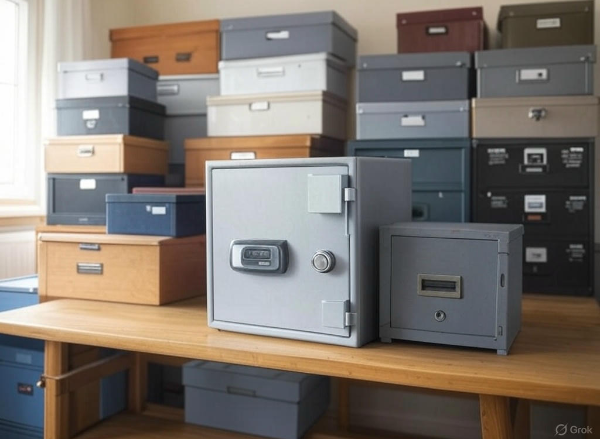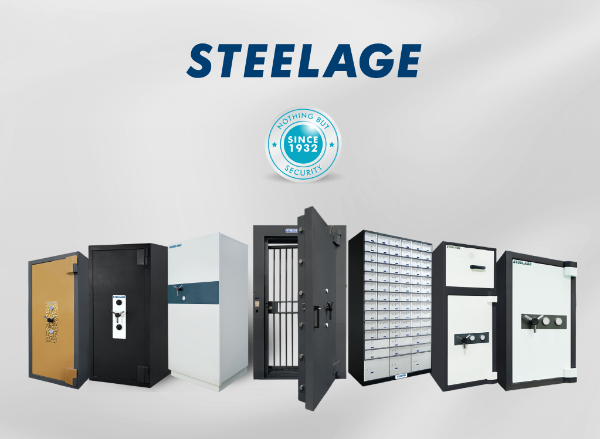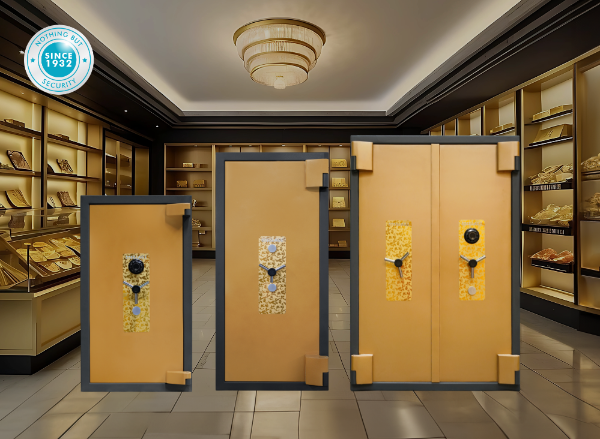
STEELAGE BLOGS
Fri 11th April 2025
Storage Boxes vs Safes: Why BIS Ratings Like Class C and BB Matter

When it comes to securing cash, jewellery, or critical documents, not all containers are created equal. Many people assume that any lockable metal box qualifies as a "safe." However, there’s a big difference between a basic storage box and a certified safe—especially when it comes to protection against theft, fire, and tampering.
If you're in banking, retail, jewellery, or high-risk industries, it’s vital to understand what makes a certified safe different—and why BIS ratings like Class C and Class BB should guide your decision.
The Core Difference: Storage Boxes vs Safes
What is a Storage Box?
A storage box is a container, often made from sheet metal, plastic, or wood, designed for organization, not protection. You’ll find these used for files, tools, or basic storage needs.
- Usually lightweight
- Minimal or no locking mechanisms
- No fire or burglary resistance
- Not tested for durability or security
In short: It’s for storing—not securing.
What is a Safe?
A safe is a secure storage unit built with specialized materials and construction techniques to resist burglary attempts, fire, or even explosions.
Certified safes are designed to withstand:
- Physical attacks (drills, cutters, torches)
- Fire damage
- Prolonged tampering attempts
They are tested under strict conditions and graded according to official standards such as those set by the Bureau of Indian Standards (BIS).
Bureau of Indian Standards Ratings: The Indian Standard for Safe Security
The Bureau of Indian Standards (BIS) classifies safes based on their resistance to burglary and fire. The higher the rating, the more secure the safe is.
BIS uses codes like Class BB, C, A, A+, AA, and AAA to indicate the safe’s ability to withstand:
- Torch attacks (T)
- Tool attacks (R)
- Fire (FR)
Let’s focus on the two classes for this blog used by many businesses in India—Class C and Class BB.
What is a Class C Safe?
What this means:
- The door of the safe can resist tool-based attacks for 30 minutes
- The other five sides can resist tools for 10 minutes
- The safe also has a fire resistance of 30 minutes
This makes Class C one of the most robust BIS-certified safes, typically used in:
- Banks
- Jewellery stores
- High-value retail
- Government or corporate record rooms
Why Choose a Class C Safe?
- Reinforced construction with advanced barrier materials
- Tested against aggressive burglary tools like drills, gas torches, and crowbars
- Ideal for locations where large amounts of valuables are stored overnight
What is a Class BB Safe?
What this means:
- The safe can resist torch and tool attacks for 15 minutes on all six sides
This is a more economical, yet effective, option for businesses that need security against burglaries and thefts.
Used by:
- Small to mid-size retailers
- Medical facilities
- Offices storing sensitive data
- Residential use with security needs
Why Choose a Class BB Safe?
- Balanced protection at an affordable price point
- Full-body resistance to tools and torches
- Ideal for low to medium threat environments
BIS Ratings at a Glance
|
Class |
Classification Code |
Resistance |
|
C |
TL 30 D x TL 10 x 5 – FR 30 |
30 min tool resistance on door, 10 min on other sides, 30 min fire resistance |
|
BB |
TRTL 15 x 6 |
15 min torch and tool resistance on all 6 sides |
The higher the rating, the stronger the protection.
Why This Matters for Buyers
Choosing between a Class C safe and a Class BB safe depends on three things:
- Value of contents stored
- Risk profile of your location
- Fire safety compliance needs


